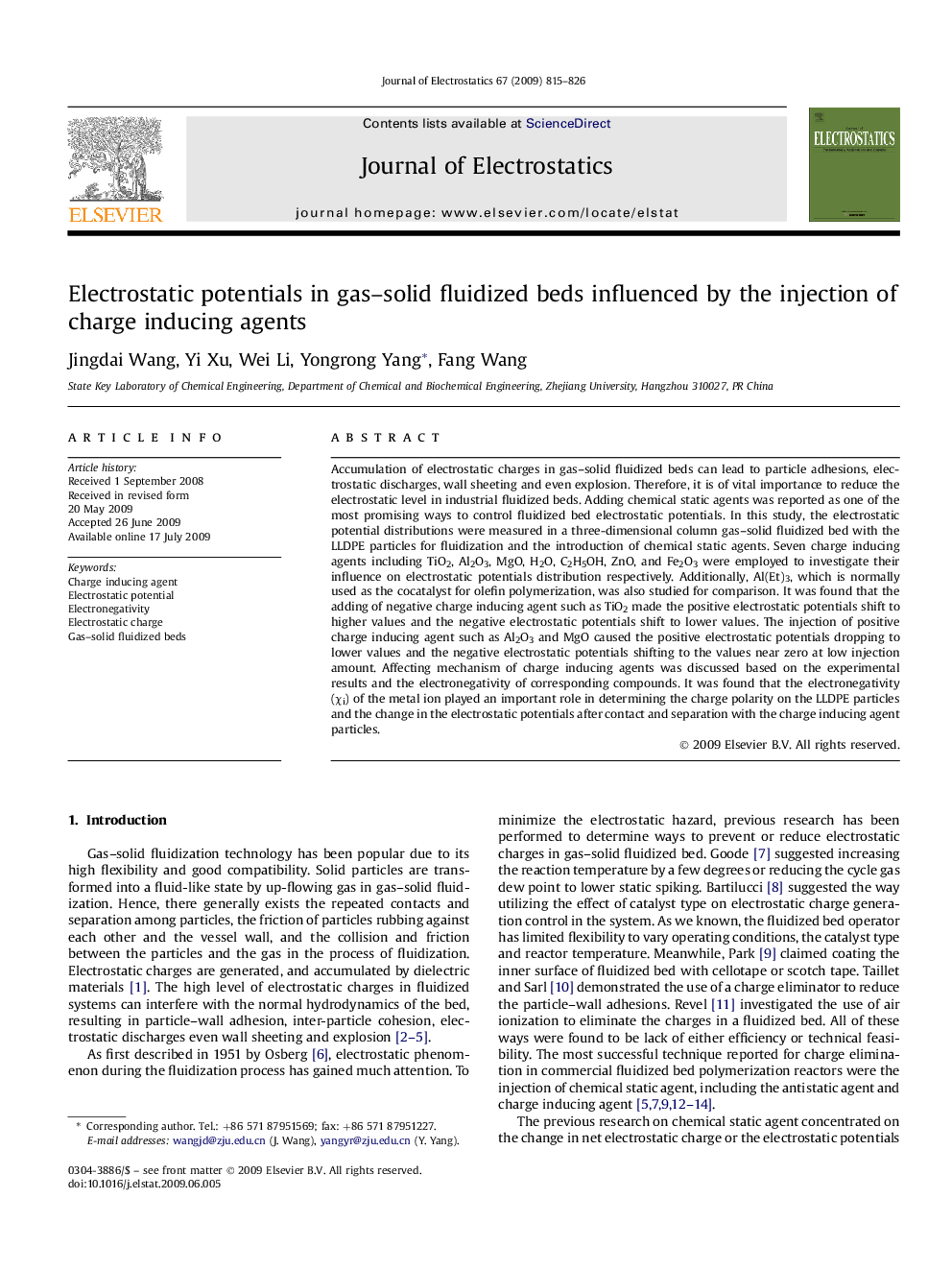| Article ID | Journal | Published Year | Pages | File Type |
|---|---|---|---|---|
| 725695 | Journal of Electrostatics | 2009 | 12 Pages |
Accumulation of electrostatic charges in gas–solid fluidized beds can lead to particle adhesions, electrostatic discharges, wall sheeting and even explosion. Therefore, it is of vital importance to reduce the electrostatic level in industrial fluidized beds. Adding chemical static agents was reported as one of the most promising ways to control fluidized bed electrostatic potentials. In this study, the electrostatic potential distributions were measured in a three-dimensional column gas–solid fluidized bed with the LLDPE particles for fluidization and the introduction of chemical static agents. Seven charge inducing agents including TiO2, Al2O3, MgO, H2O, C2H5OH, ZnO, and Fe2O3 were employed to investigate their influence on electrostatic potentials distribution respectively. Additionally, Al(Et)3, which is normally used as the cocatalyst for olefin polymerization, was also studied for comparison. It was found that the adding of negative charge inducing agent such as TiO2 made the positive electrostatic potentials shift to higher values and the negative electrostatic potentials shift to lower values. The injection of positive charge inducing agent such as Al2O3 and MgO caused the positive electrostatic potentials dropping to lower values and the negative electrostatic potentials shifting to the values near zero at low injection amount. Affecting mechanism of charge inducing agents was discussed based on the experimental results and the electronegativity of corresponding compounds. It was found that the electronegativity (χi) of the metal ion played an important role in determining the charge polarity on the LLDPE particles and the change in the electrostatic potentials after contact and separation with the charge inducing agent particles.
